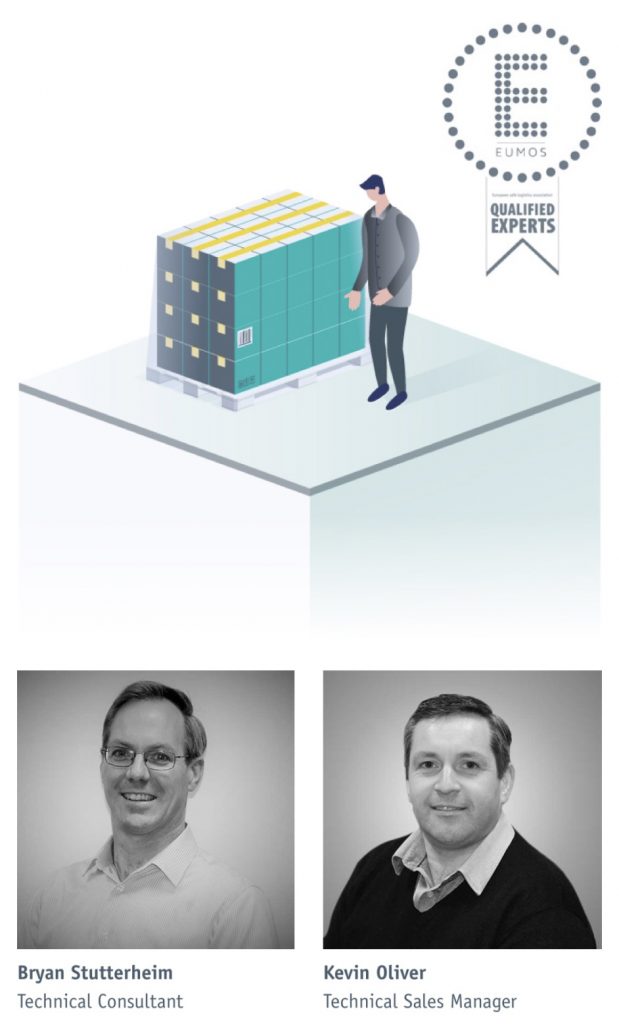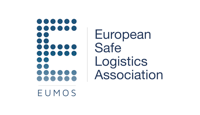Intelligent load stability – Hazel 4D
Statistics published by EUMOS state that up to 16% of accidents with fatalities involve industrial vehicles, and 1 in 4 has cargo securing as a root cause. Unstable pallets don’t just increase the risk of road traffic accidents, but they also make loading and unloading dangerous and can lead to perilous situations in storage too.
Keeping everyone safe is a big concern for our customers – that’s why our Intelligent Load Stability system has safety at its core and is designed to optimise load stability without unnecessary increases in cost or a reduction to your operational efficiency. In fact, we have ways to achieve the exact opposite – greater stability and improved safety for less.
The European Health and Safety Week that takes place in October, is a reminder that behind every job is a human life that needs protecting. We invited our load stability experts to answer some of the questions most commonly asked by customers who want to know what they can do to optimise load stability to enhance the safety of their operations.
Bryan Stutterheim is one of our leading technical consultants and Kevin Oliver is our technical sales manager. Both have been with us for over 20 years, building the extensive knowledge that makes them experts in load stability and safety.

“How can I ensure a stable, safe pallet without it taking extra time and costing more to produce?”
Operations Manager
Kevin says: The remarkable thing is that in many cases we can actually achieve a much more stable pallet while using significantly less material and in a shorter timeframe. That means we can deliver greater stability at a lower cost than many operations are currently achieving: it’s not unusual for our Intelligent Load Stability (ILS) system to reduce costs by up to 65%. The old saying that you can achieve more with less is certainly true when it comes to our ILS and our Extremus film. It’s all about stretch film being correctly applied to the load, not about the amount you use.
Our state-of-the-art testing equipment makes sure our solution is working as effectively as possible to achieve stability and, as a EUMOS registered firm, we’re focused on adhering to the safest of standards. And it’s not just on the roads that we are trying to make it safer – with our Extremus film we can cut the frequency of roll changeovers by 2/3 minimising the risk of back injury of operators even further.
“I need to know we’re meeting EUMOS requirements – how can I be sure?
Operations Manager
- Bryan says: With our dynamic mobile testing equipment we are able to test the pallet stability on site and if formal certification is required this is possible through the use of our associated testing lab. Often due to our knowledge of the EUMOS standards we are able to help our clients to achieve a suitable standard of stability without the formal certification.
“What other dangers are easily missed? What should I double-check for?
Logistics Manager
Bryan says: There are probably three things that are easily overlooked but really likely to cause problems.
Incorrect wrapping patterns are a real problem and insufficient film overlap and reinforcement wraps in the wrong places can cause severe weakening to pallet stability.
Tail ends which can catch in machinery and on forklift axles and wheels. That’ll tip or rip pallets, or cause trip hazards in loading and unloading. It’s often just about poorly maintained or calibrated machines or the wrong film – all of which we can easily address.
Insufficient locking to pallet causes problems because the load and pallet are not sufficiently held together allowing the load to move during cornering or braking, or when in transit on a forklift. Often operations turn to expensive anti-slip sheets or cardboard edge protectors to try to prevent the load from moving, but this increases costs and decreases efficiency, and can often be replaced with our ILS system.
“We always make sure the driver lashes the pallet sufficiently on their wagons to ensure nothing falls. Does it matter then how well I wrap my pallets?
Warehouse Manager
Kevin says: This is a common misconception and one of the most dangerous… every pallet needs to be stable within its own right as there are many times in the pallet’s journey where it will not be lashed, such as during loading and unloading and storage which can often involve high bay racking.
COULD WE HELP YOU CUT COSTS AND PLASTIC WASTE, TOO?
When we work with you to understand your needs, recommend a tailored solution and optimise machines and material, you get total load stability and a real weight off your mind. Plus, we’ll make sure it stays that way with regular visits to ensure your system is always on top form.
Visit: https://www.hazel4d.com/en/content/intelligent-load-stability

